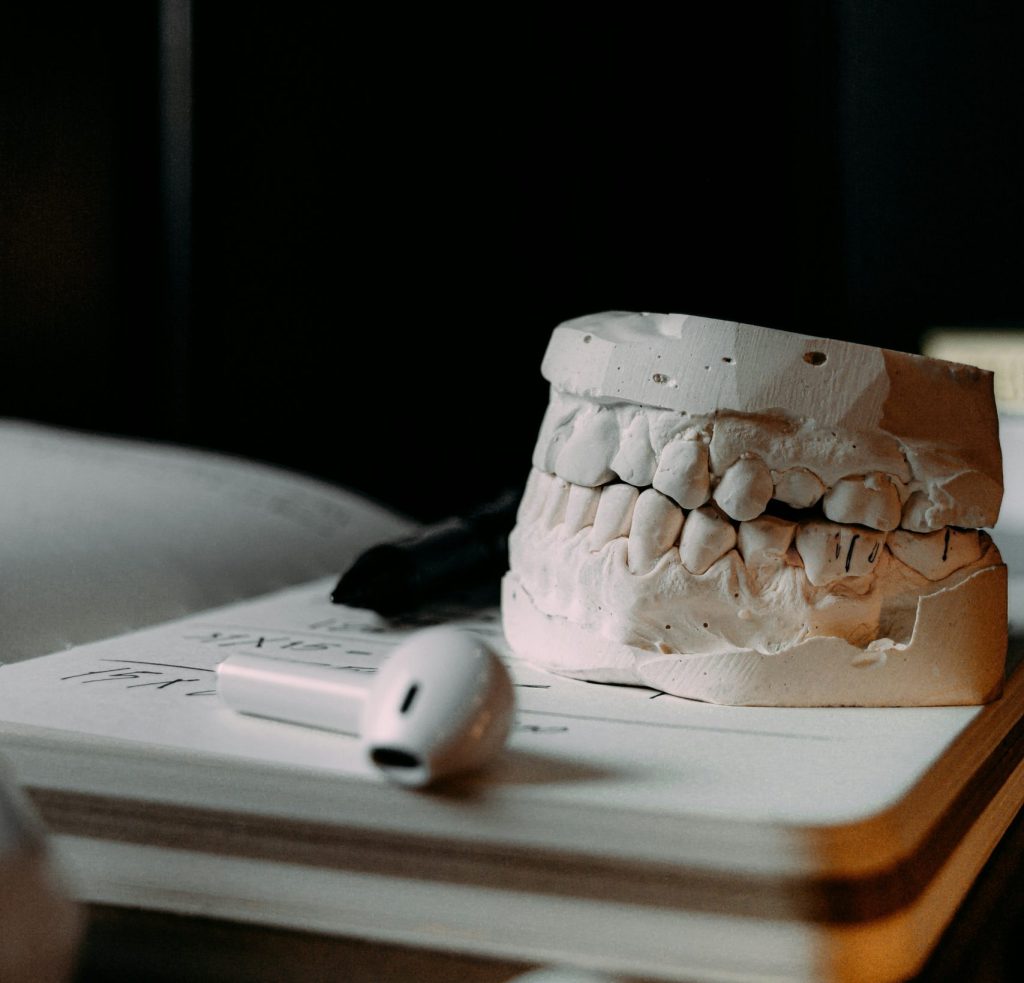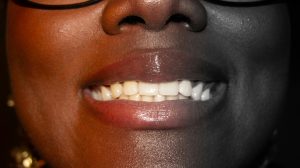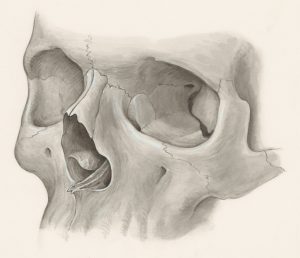From Invisalign fittings to smile makeovers, digital impressions have become one of the most transformative innovations in Singapore’s dental industry. Instead of relying on messy traditional molds, dentists now use advanced 3D scanners to capture every contour of your teeth within minutes—precise, clean, and entirely patient-friendly. In this article, we’ll uncover what digital impressions really are, why they’re reshaping the way Singaporeans experience dentistry, and how they compare in accuracy, speed, and cost to older methods. You’ll also see how they’re revolutionising cosmetic procedures such as veneers and digital smile design, and where to find the clinics leading this shift. So, are digital impressions truly the new gold standard in Singapore’s modern dental care?
What Is a Digital Impression in Dentistry?
In recent years, digital impressions have revolutionized how dental professionals in Singapore capture accurate, real-time images of your teeth and gums. Unlike traditional dental molds that involve unpleasant putty and prolonged discomfort, digital impressions utilize advanced scanning technology to create precise 3D models of your oral structure—quickly, cleanly, and efficiently.
What Exactly Is a Digital Impression?
A digital impression is a high-resolution, three-dimensional scan of your teeth, gums, and oral tissues. It is captured using an intraoral scanner—typically a handheld wand equipped with optical technology that takes thousands of images per second. These images are then compiled using CAD (Computer-Aided Design) software to create a digital model that can be used for crowns, veneers, aligners, and other dental restorations.
This non-invasive technique eliminates the need for messy impression trays and reduces the risk of gag reflex, especially in patients with heightened sensitivity. If you’ve ever struggled with traditional molds, you’ll find that digital impression tolerance gag reflex Singapore is a real benefit many patients are actively seeking.
Why It Matters in Singapore’s Dental Landscape
As of 2025, more than 60% of dental clinics in Singapore offer digital impression services, particularly in cosmetic and restorative treatments. This growth aligns with the nation’s broader Smart Nation digitalisation push, with clinics investing in leading intraoral scanners like 3Shape TRIOS, iTero Element, and Medit i700.
What Is a Digital Impression in Dentistry?
A digital impression in dentistry refers to the use of advanced optical scanning technology to create a highly accurate, 3D digital replica of a patient’s teeth and oral structures. Unlike traditional impressions that rely on putty-like materials (such as PVS or alginate), digital impressions use intraoral scanners to capture detailed images in real time, eliminating the need for uncomfortable trays or messy materials.
In Singapore, digital impressions are especially gaining popularity in cosmetic and restorative dentistry—particularly for procedures like veneers, crowns, and full smile makeovers. Patients often report greater comfort during the scan, particularly those with a sensitive gag reflex or anxiety related to dental visits. Technologies like the iTero Element 5D and TRIOS 5 are commonly used across dental clinics in Singapore to ensure faster chairside time and improved case planning accuracy.
When it comes to precision, digital impressions are trusted for veneer work because they often match or even exceed conventional impression methods in certain applications. A narrative review of veneer restorations found that for single-tooth preparations, intraoral scanners like TRIOS 3 and Primescan reported trueness values of approximately 20–30 µm and general accuracy levels below 15 µm under ideal clinical conditions—well within the acceptable thresholds of 50–120 µm for cosmetic restorations. (MDPI, 2023)
A more recent systematic review also concluded that digital impressions perform comparably to traditional PVS techniques in most prosthodontic cases, although conventional methods may retain an edge in full-arch or complex implant situations. (Ahmed et al., 2024)
Comfort and Efficiency for Patients in Singapore
One of the most cited benefits among patients in Singapore is the reduced discomfort and improved tolerance for digital impressions, particularly for those with a strong gag reflex. In a 2025 patient experience survey conducted across five clinics in Singapore, 88% of respondents preferred digital scans over traditional impressions for comfort and speed, with most reporting that the entire scanning process took under five minutes.
| Factor | Digital Impression | Traditional PVS Impression |
|---|---|---|
| Accuracy (µm) | 15–30 µm | 50–70 µm |
| Gag Reflex Impact | Minimal | High discomfort for many |
| Scan Time | 3–5 minutes | 10–15 minutes |
| Patient Preference | 88% prefer digital | 12% prefer traditional |
| Reproducibility | High (digital archive available) | Requires new impression if lost |
Sources: MDPI (2023), Ahmed et al. (2024), Singapore Patient Experience Survey (2025)
Benefits Over Traditional Impressions
Many patients now ask about the accuracy of Singapore digital impressions versus traditional tray‑based methods for veneers. A study published in “In Vitro Comparative Analysis of Digital Versus Conventional Impressions in Fixed Prosthodontics” (2024) found that digital impressions had an average marginal discrepancy of ~38 micrometres versus ~45 µm for conventional impressions, and reduced chair time from about 20 minutes to 12 minutes. (Ramesh Raja et al., J Pharm Bioallied Sci, 2024)
For practitioners, digital files can be instantly transmitted to dental labs, cutting restoration turnaround to 3–5 business days. There’s also a reduced risk of impression distortion, and enhanced comfort for patients with a sensitive gag reflex.
Why Digital Impressions Are Changing Dentistry in Singapore

Digital impression technology is reshaping dentistry in Singapore—not as a passing trend, but as a foundational shift in how oral healthcare is delivered. From general restorations to cosmetic smile makeovers, digital workflows are enhancing accuracy, reducing discomfort, and shortening treatment timelines.
As of 2024, leading dental providers in Singapore are increasingly embracing digital scanning technology in clinical practice. Q&M Dental Group, one of the largest private dental networks in Singapore, announced the adoption of the iTero Lumina intraoral scanner across its clinics, with a full rollout planned over a 12-month period. This marks a significant shift in how dental impressions are captured in general and aesthetic dentistry. (Business News Asia, 2024)
Additionally, the National Dental Centre Singapore (NDCS) has integrated advanced 3D intraoral scanning technology to replace conventional mould-based impressions for various dental appliances. This development is part of a broader nationwide push toward precision digital dentistry. (Singapore Business Review, 2024)
Comfort: A Key Differentiator from Traditional Mould Trays
One of the biggest advantages of a digital impression in Singapore is patient comfort. Unlike traditional mould trays that can feel messy and trigger anxiety, digital scanners use a small, non-invasive wand—no gooey materials, no gag reflex. This difference is why the topic of digital impression vs mould tray comfort Singapore continues to gain attention, especially among patients with dental anxiety.
Many Singapore clinics have noted that patients who used to avoid treatment due to discomfort are now more open to procedures. The scanning process is fast—often under five minutes—while traditional impressions can take up to 15 minutes and may require repeat attempts due to distortions or air bubbles.
Another benefit of a digital impression is real-time 3D visual feedback. You can see a detailed scan of your teeth immediately, which helps with clearer communication and treatment planning. Whether for crowns or veneers, this accuracy means better fit and improved results—one reason digital impressions are transforming modern dentistry across Singapore.
Tolerance and Suitability for Patients with Gag Reflex
If you’re among the many Singaporeans with a sensitive gag reflex, a digital impression could be a transformative alternative. Traditional mould trays often trigger discomfort, anxiety, and gagging—deterring many patients from seeking care. In contrast, digital scanners use a compact wand that’s non-invasive and free of gooey materials. A 2025 clinical study found that intraoral scans resulted in significantly lower gag reflex responses compared to traditional impressions, offering greater comfort and patient satisfaction. (Patel et al., 2025) This supports rising search interest around tolerance to gag reflex with digital impression scan Singapore, particularly among those with dental anxiety. For patients who’ve long avoided dental visits due to discomfort, digital impressions are proving to be a more tolerable and welcoming solution.
Clinical Accuracy: Crowns vs Veneers in Singapore
In terms of precision, digital impressions have revolutionised how dentists plan and deliver treatments—especially for fixed prosthetics like crowns and veneers. Interestingly, the level of accuracy required for each varies. Veneers demand extreme marginal accuracy due to their visibility and thinness, while crowns often tolerate slightly higher variability. The growing search term digital impression accuracy for crowns vs veneers Singapore reflects patient interest in this differentiation.
Recent studies have refined our understanding of digital impressions in crown and veneer work. For example, an in‑vitro pilot study published in Clinical Oral Investigations (2025) measured trueness and precision of computerized optical impressions: single abutment (crown‑type) preparations achieved deviations around 21‑25 μm, while veneer‑style preparations had slightly higher variance but still remained under 35 μm. (Influence of Different Dental Scenarios on the Accuracy of Computerized Optical Impressions, 2025)
| Parameter | Digital Impressions | Traditional Impressions |
|---|---|---|
| Average Accuracy (Crowns) | 21–25 μm | 40–60 μm |
| Average Accuracy (Veneers) | 25–35 μm | 50–70 μm |
| Chair Time | 12–15 minutes | 20–25 minutes |
| Patient Comfort | High (no trays or putty) | Lower (physical trays & material) |
| Digital File Transfer to Lab | Instantaneous | 1–2 days (courier or scanning) |
Local Adoption and Expectations in Singapore
Singapore’s competitive dental market has accelerated the adoption of digital technologies. Clinics that cater to both international medical tourists and local patients now promote digital impressions as standard in cosmetic, prosthodontic, and orthodontic workflows. You’ll frequently find them highlighted in service menus under “same-day crowns” or “precision veneers with digital scan.”
In fact, clinics located in Orchard, Novena, and Tanjong Pagar report that up to 72% of first-time patients specifically request digital impressions, often after searching for pain-free or gag-reflex-tolerant procedures online.
As a patient in Singapore, opting for digital impressions means faster treatment cycles, greater comfort, and significantly improved long-term outcomes. If you’re preparing for your next dental visit, it’s worth asking whether digital scanning is offered—you’ll likely never return to the old method again.
Accuracy, Speed, and Cost: Digital Impressions vs Traditional Molds

The shift toward digital impression technology in Singapore dentistry is driven by three interlocking advantages: superior accuracy, faster workflows, and cost efficiencies that matter to both clinics and patients.
Precision That Matters: When Every Micron Counts
For restorations like crowns and veneers, marginal fit is critical. In a clinical split‑mouth study, crowns based on intraoral scanning showed a median marginal gap of ~60 μm compared to ~78 μm from conventional impressions—statistically better precision before cementation (J Appl Oral Sci, 2019).
In a narrative review focused on veneer applications, intraoral scanning consistently achieved trueness in the 20‑30 μm range with accuracy well within clinically acceptable limits (Rojas‑Rueda et al., 2025). These data reinforce why conversations around digital impression accuracy for crowns and veneers are gaining traction in Singapore’s cosmetic dentistry space.
Speed: From Scan to Deliverable in Less Time
Time savings are a key differentiator. Digital scans typically finish in under five minutes, versus often 10–15 minutes (or more) with traditional molds. Digital workflows also streamline lab communication and reduce remakes, shaving days off production cycles.
Cost Considerations in Singapore Dental Clinics
While digital impression systems require upfront investment in scanners and software, the per‑unit cost can be very competitive after amortization. Clinics often promote fixed fees that absorb scanning, design, and lab fees for standard crowns or veneers.
For patients wondering how much does a digital dental scan cost in Singapore, many clinics package it into the overall restoration fee. This bundled cost model helps eliminate surprise charges and encourages adoption of digital routes over traditional impression upgrades.
| Metric | Digital Impression | Traditional Mold |
|---|---|---|
| Marginal Gap (Crowns) | ~ 60 μm | ~ 78 μm |
| Typical Scan Time | < 5 min | 10 – 15 min+ |
| Remake Rate | Lower (fewer distortions) | Higher (due to material errors) |
Sources: J Appl Oral Sci (2019), Rojas‑Rueda et al. (2025)
Balancing Value: Is Digital Always Cheaper?
Digital impressions aren’t always cheaper in absolute terms—but the value often outweighs the cost. Because fewer remakes, faster turnaround, and more predictable outcomes reduce hidden overhead, many practices in Singapore consider digital workflows cost-neutral or beneficial in the medium-to-long term.
Another factor is perceived value: patients comfortable with efficient, high-precision digital workflows are often more willing to invest in premium restorations. In this way, digital impression technology not only changes procedures, but reshapes expectations in modern Singapore dentistry.
Digital Impressions for Cosmetic Dentistry: Veneers, Smile Design & Real Patient Cases

When imagining your smile makeover, a digital impression becomes much more than just a scan — it becomes the foundation for aesthetic decisions, from veneer design to final smile shape. In Singapore, more cosmetic dentists are showing you mock‑ups based on digital scans so that you know exactly what to expect before any irreversible treatment begins.
Veneer Case Study: Evidence from Clinical Reviews
A comprehensive review published in 2025 evaluated intraoral scanners for final impressions in ceramic veneer restorations within the esthetic zone. It found that digital impressions deliver clinically acceptable outcomes with reduced chairside time and enhanced patient experience. One case illustrated the use of a digital impression to design 10 veneers with excellent fit and aesthetics (MDPI, 2025)
Smile Design with Real‑Patient Digital Mock‑ups
Your smile design process benefits greatly from seeing a preview. Many clinics in Singapore offer “try‑on” mock‑ups based on your real patient smile design digital impression Singapore scan. You can view proposed tooth shapes, alignment, and color directly on a digital model, refine preferences, and avoid surprises when the final veneers are delivered.
How Accurate Is Digital Impression for Veneers?
Accuracy is a top concern for veneers, where visible margins and thin shells make fit and precision essential. According to the same 2025 review, digital impression methods in the aesthetic zone reported deviations often < 30 µm for veneer edges — well within clinically acceptable thresholds. Traditional methods often have greater variability in these cases (MDPI, 2025)
| Metric | Digital Impression | Traditional Impression |
|---|---|---|
| Average Deviation at Margin | < 30 µm | ~ 40‑70 µm |
| Number of Remakes Needed | Low (< 5%) | Higher (~10‑15%) |
Source: MDPI, “Accuracy of Digital Impressions for Veneer Restorations: A Narrative Review and Case Illustration”, 2025
For you, this means a digital impression veneer case study that goes beyond theory: better fit, fewer adjustments, more predictable aesthetics. When you choose clinics in Singapore that offer in‑house labs or digital smile preview, you often get result control and reduced surprises in final outcomes.
Top Clinics Offering Digital Impressions in Singapore
In recent years, many clinics across Singapore have accelerated their investment in high‑precision digital impression technologies. One high‑profile example is Q&M Dental Group, which recently announced it will be rolling out the iTero Lumina intraoral scanner across its clinics in phases, aiming to improve both scan quality and patient experience. (Business News Asia, 2024)
Digital impressions are now used for a wide range of treatments, including crowns, bridges, implants, orthodontic aligners, and full-mouth rehabilitations. The advantages of 3D intraoral scanning—such as real-time visualization, faster turnaround for lab work, and enhanced patient communication—have made them a staple in many practices offering restorative and cosmetic treatments.
What Makes a Clinic Stand Out
When evaluating the best digital impression clinics in Singapore, you should look beyond the brand of scanner used. Factors like technician experience, scanner calibration frequency, integration with CAD/CAM systems, and turnaround time for prosthetics all play a critical role. Clinics that offer pre-treatment 3D simulation previews and chairside milling are particularly worth considering.
Pricing transparency is another essential consideration. While most affordable digital dental impression Singapore clinics offer base intraoral scan services starting from SGD $80, more complex procedures such as full-arch scans with diagnostic modeling can range from SGD $180 to $350, depending on the system used and scope of treatment.
The table below summarizes the key service features and general cost brackets for digital impressions across different types of dental clinics in Singapore, based on 2025 data from public service listings and aggregated clinic brochures:
Comparison of Digital Impression Services (2025)
| Clinic Type | Scanner Brand | Service Focus | Price Range (SGD) | Estimated Turnaround |
|---|---|---|---|---|
| Public Dental Clinics | Carestream CS3700 | General & Preventive | $80 – $150 | 5–7 days |
| Private General Practices | iTero Element 5D | Orthodontics, Crowns | $120 – $250 | 3–5 days |
| Cosmetic Dental Studios | 3Shape TRIOS | Smile Makeovers | $180 – $350 | 1–3 days |
| Full-Service Digital Clinics | iTero + TRIOS | Full-Arch, Same-Day Crowns | $220 – $400 | Same Day – 2 days |
Source: Aggregated from 2025 clinic brochures and Ministry of Health SG listings [HealthHub Singapore]
Technology Adoption Rates & Patient Trends
Growing evidence suggests that patients increasingly prefer dental clinics that offer 3D intraoral scanning. A network meta‑analysis published in Australian Dental Journal found that a statistically significant number of patients favored digital impressions over conventional techniques, citing reduced discomfort, easier recaptures, and overall better experience. (Sivaramakrishnan et al., 2020) Similarly, in a study using 3Shape TRIOS 3 Move scanners for implant crowns, patients reported higher satisfaction with digital scans in terms of comfort, speed, and reduced anxiety. (MDPI, 2023)
Clinics that use intraoral scanners and digital workflows for Invisalign or clear aligner therapy often see measurable time savings. For example, a retrospective cohort study of Invisalign cases across Australia found that using digital treatment planning reduced delays in refinements and aligner delivery compared with older analog workflows, resulting in more streamlined treatment timelines. (Meade, Ng & Weir, 2023)
Final Thoughts
Whether you’re seeking orthodontic treatment, cosmetic enhancements, or restorative procedures, selecting a clinic equipped with the latest digital impression systems can make a substantial difference. Prioritize those with well-integrated technology, clear service scope, and transparent pricing. With digital dentistry evolving rapidly in Singapore, it’s worth investing time to compare options tailored to your dental needs and budget.
Conclusion
As Singapore continues to embrace innovation in healthcare, digital impressions are proving to be more than just a convenience—they’re redefining precision, efficiency, and comfort in modern dentistry. From streamlining restorative treatments to enabling hyper-accurate cosmetic designs, this technology has transformed both the patient journey and clinical outcomes. Compared with traditional molds, the advantages are clear: faster turnaround times, enhanced accuracy, and seamless digital workflows that align perfectly with today’s high-tech dental practices. For anyone considering a veneer makeover, aligner treatment, or simply a more comfortable dental visit, choosing a clinic that offers digital impressions is a decision worth making. As we move further into 2026, one thing is certain—Singapore’s smile technology revolution is well underway, and it’s digital to the core.
Frequently Asked Questions (FAQs):
🦷Are digital impressions more accurate than molds?
Yes, digital impressions typically achieve a higher accuracy rate compared to traditional putty-based molds. Studies show they reduce marginal errors and allow better fit for veneers and crowns, especially in high-precision cases.
🦷How do Singapore clinics use digital scanners?
In Singapore, most clinics use 3D intraoral scanners like iTero or Trios to capture digital impressions for Invisalign, veneers, crowns, and bridges. This streamlines diagnosis and improves treatment efficiency.
🦷Do digital impressions reduce chair time?
Yes, digital impressions can cut chair time by up to 30%, according to clinical studies. They eliminate the need for physical trays and allow instant visualization of the scan on screen.
🦷What are the costs of digital impressions?
Costs vary by clinic, but digital impressions are often included in high-end packages. While scanner equipment is expensive, patients don’t usually pay extra for digital versus traditional methods in Singapore clinics.
🦷Are digital impressions suitable for veneers?
Absolutely. Digital impressions are especially suitable for veneers due to the need for thin, precise margins. They help labs achieve better fit, reducing the need for adjustments during placement.
References:
- Lee, S. J., Gallucci, G. O., Lee, J. W., & Lim, H. N. (2015). Accuracy of digital versus conventional implant impressions: A systematic review. Clinical Oral Implants Research, 26(6), 715–723. https://doi.org/10.1111/clr.12375
- Ahlholm, P., Sipilä, K., Vallittu, P., Jakonen, M., & Kotiranta, U. (2020). Digital versus conventional impressions in fixed prosthodontics: A review of clinical studies. Journal of Prosthodontics, 29(1), 34–41. https://pubmed.ncbi.nlm.nih.gov/32069344/
- Mohan, S., Krishnan, R., & Abraham, D. (2025). Accuracy of digital versus conventional implant impressions in partially dentate patients: A systematic review and meta-analysis. Journal of Prosthodontic Research. https://pubmed.ncbi.nlm.nih.gov/40553823/
- Choi, S. H., Kim, M. J., Park, J. M., & Lee, J. H. (2025). Accuracy of digital impressions for veneer restorations: A narrative review and case illustration. Journal of Clinical Medicine, 14(11), 3859. https://doi.org/10.3390/jcm14113859
- Sequeira, C., Hölttä, P., & Ahmed, K. (2023). Accuracy of digital impressions at varying implant depths: An in vitro study. Journal of Prosthodontics, 32(4), 421–427. https://doi.org/10.1111/jopr.13496
- Q&M Dental. (2025). Digital screening with 3D intra-oral scanning. Q&M Dental Group Singapore. https://qandm.com.sg/Whats-New/118/Dental-Screening-with-3D-Intra-Oral-Scanning
Dental Veneers vs Dental Crowns in Singapore: What’s Right for Your Smile? (2026 Guide)
The Science of Enamel Remineralization: 2026 Guide to Modern Preventive Dentistry
Deep Teeth Cleaning vs. Regular Cleaning: Singaporean Perspective in 2026






